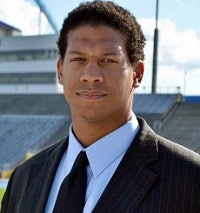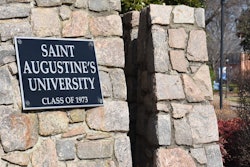In the past year, political and cultural resistance movements in the form of protests, marches and movements emerged online.
We often hear that “telling our stories” is an important means of cultural nourishment and resistance, but we would like to argue that a specific method of storytelling — counterstory or “counter-discourse” — can be particularly valuable in the higher education of minority students in the 21st century and in boosting institutional advancement strategies at historically Black colleges and universities (HBCUs) and other minority-serving institutions (MSIs).
“Does racism still exist?” This question was asked by a student during the first college-level course that I, Aja Martinez, taught 12 years ago. It became the impetus for my work in critical race theory (CRT).
In our contemporary socio-political context, I rarely face this question, and I find myself forgetting that my young, predominantly White students who attend a private predominantly White institution still have much to learn about race relations in our institutional spaces. Considering this context and my own identity as Chicana — of Mexican-American and indigenous ancestry, born and raised in the U.S. Southwest — I find the most accessible point of entry to conversations about racial justice for my students is through story — counterstory, to be specific.
CRT made way for the emergence of counterstory, a method used in scholarly and popular publications as a necessary and legitimate mode of research for marginalized scholars, particularly those from cultures where the oral tradition is valued. Counterstory serves to expose, analyze and challenge stock stories of racial privilege and can help strengthen traditions of social, political and cultural survival and resistance.
 Dr. William Broussard
Dr. William BroussardBelow is a meme that represents a stock story of allyship associated with a privileged perspective of “assistance” toward the listed marginalized identities. However, the second meme represents the counterstories that my students and I construct over the course of a semester as we discuss Whiteness, allyship and the responsibility of privilege to work beyond the parameters of the stock story and to change the story.
A stock-story meme: If you wear a hijab, I’ll sit with you on the train.
A counterstory meme: If you’re Islamophobic, I’ll ________.
A stock-story meme: If you’re trans, I’ll go to the bathroom with you.
A counterstory meme: If you’re transphobic, I’ll ________.
When it comes to minority-serving institutions, aside from the proverbial “Why do we need minority-serving schools? Isn’t that reverse racism?” heard in everyday conversation, historical underfunding of these institutions at the state and federal levels means that they do not always garner the political, cultural and financial support necessary to uphold their missions. This, in turn, makes it especially difficult to secure significant research grants and private donations.
HBCU supporters often say, “We need to tell our stories.” That is a clarion call for an aggressive, frequent and consistent effort at branding, marketing and sharing stories that demonstrate how our institutions achieve their missions and provide opportunities. However, these stories are often thwarted by a constant stream of negative messaging.
Simply introducing narratives about institutional success into an imagined void, without taking into consideration negative and pernicious narratives swirling about, is not an effective strategy for challenging a persistent mythology about failure and inadequacy. It is not enough to simply promote institutional successes to alumni and local prospects. Institutions must engage in counterstorytelling, using quantitative and qualitative data and analysis to shape narratives that advance the institutional brand while actively challenging and unraveling existing narratives that threaten their success.
Institutional leaders — particularly in institutional advancement — need to actively engage in writing op-eds and letters to editors and publishing research in response to negative narratives in order to seize narrative direction, create momentum and provide inspiration to supporters. Particularly with regard to fundraising efforts, a balance of traditional and social media efforts to promote institutional success and resilience despite external challenges and detractors can give supporters the sense that their investment is tied closely to feelings of pride and excitement.
Counterstory can also allow students, faculty, staff and supporters to define themselves and defend their interests in environments that often marginalize or erase their voices. It is time to explore ways to amplify minority voices in classrooms and in the media to ensure equitable representation.
Dr. Aja Martinez is a professor of writing and rhetoric at Syracuse University. Dr. William Broussard is the director of corporate and foundation relations and a lecturer in the department of language, reading and culture at Elizabeth City State University.















